Ditapis dengan
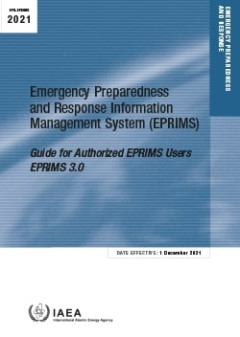
Emergency Preparedness and Response Information Management System (EPRIMS): E…
At its 59th regular session, the IAEA General Conference adopted resolution GC(59)/RES/9, which “[e]ncourages Member States to ensure regular self-assessments of their domestic nuclear, radiation, transport and waste safety, as well as emergency preparedness, using the IAEA self-assessment tools and taking into account the relevant IAEA Safety Standards”. To assist Member States in completi…
- Edisi
- -
- ISBN/ISSN
- 2518–685X
- Deskripsi Fisik
- 129 p
- Judul Seri
- -
- No. Panggil
- 539.75 IAE e
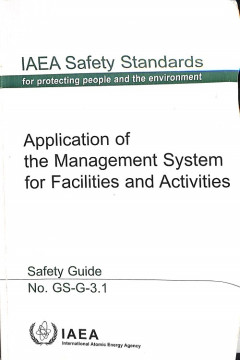
Application of the Management System for Facilities and Activities, Safety Guide
This publication provides guidance for following the requirements for management systems that integrate safety, health, security, quality assurance and environmental objectives. A successful management system ensures that nuclear safety matters are not dealt with in isolation but are considered within the context of all these objectives. The aim of this publication is to assist Member States to…
- Edisi
- -
- ISBN/ISSN
- -
- Deskripsi Fisik
- 105 p. : Illus. ; 24 cm
- Judul Seri
- Safety Standards Series No. GS-G-3.1
- No. Panggil
- 633.10486IAE A
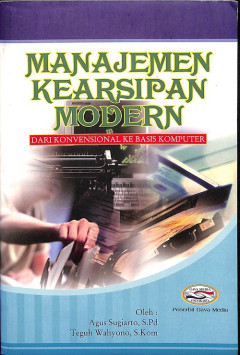
Manajemen Kearsipan Modern: Dari Konvensional ke Basis Komputer
Membahas tentang sistem kearsipan dari konvensional sampai pada basis komputer. Pembahasan dilakukan secara luas dan sederhana, sehingga diharapkan dapat mempermudah pemahaman pembaca, terutama mahasiswa di bidang sekretaris, manajemen atau administrasi perkantoran untuk membantu meningkatkan pemahaman mereka tentang manajemen kearsipan yang baik. (Jml)
- Edisi
- -
- ISBN/ISSN
- 9793469722
- Deskripsi Fisik
- ix, 222 p. : Illus. ; 20 cm
- Judul Seri
- -
- No. Panggil
- 651.56 SUG m

Managing Nuclear Safety Knowledge: National Approaches and Experience - Safet…
This publication provides practical guidance and information to Member States on how to manage nuclear safety knowledge at the national level, beyond the boundaries of individual organizations. It describes the underlying concepts, challenges and available approaches and tools, as well as summarizing the experience gained by Member States to date. The publication is in line with the ultimate ob…
- Edisi
- -
- ISBN/ISSN
- 978-92-0-104221-7
- Deskripsi Fisik
- 45 pages
- Judul Seri
- -
- No. Panggil
- 621.48 IAE M
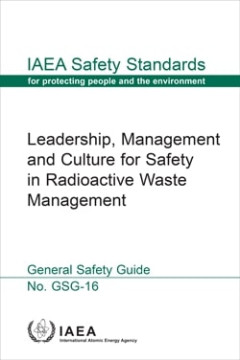
Leadership, Management and Culture for Safety in Radioactive Waste Management…
This Safety Guide provides recommendations on how to comply with IAEA safety requirements on leadership and management for safety in the area of radioactive waste management. It presents updated guidance on developing and implementing management systems for safety during all steps of radioactive waste management. Emphasis is placed upon effective leadership and culture for safety. The publicati…
- Edisi
- -
- ISBN/ISSN
- 978–92–0–137521–6
- Deskripsi Fisik
- 99 p
- Judul Seri
- IAEA safety standards series
- No. Panggil
- 621.039.7 IAE l
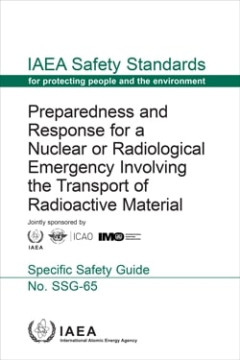
Preparedness and Response for a Nuclear or Radiological Emergency Involving t…
Radioactivity is a natural phenomenon and natural sources of radiation are features of the environment. Radiation and radioactive substances have many beneficial applications, ranging from power generation to uses in medicine, industry and agriculture. The radiation risks to workers and the public and to the environment that may arise from these applications have to be assessed and, if necessar…
- Edisi
- -
- ISBN/ISSN
- 978–92–0–127621–6
- Deskripsi Fisik
- 91 p
- Judul Seri
- IAEA safety standards series
- No. Panggil
- 614.876 IAE p
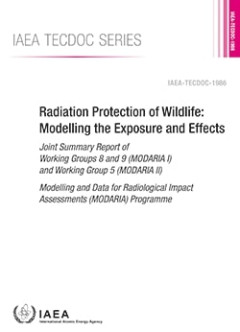
Radiation Protection of Wildlife: Modelling the Exposure and Effects, IAEA TE…
In recent years there has been a rapid development in models and approaches to assess whether the environment (or wildlife) is protected from releases of radioactive material. Through the Environmental Modelling for Radiation Safety (EMRAS and EMRAS II) and Modelling and Data for Radiological Impact Assessments (MODARIA I and MODARIA II) programmes, the IAEA has facilitated knowledge sharing on…
- Edisi
- -
- ISBN/ISSN
- 978-92-0-138021-0
- Deskripsi Fisik
- 89 p
- Judul Seri
- IAEA TECDOC series
- No. Panggil
- 614.715 IAE r
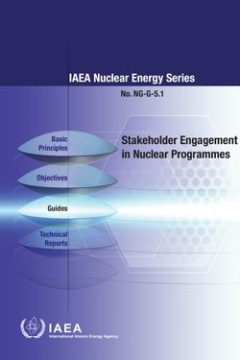
Stakeholder Engagement in Nuclear Programmesl : IAEA Nuclear Energy Series NG…
As societies evolve and citizens have increasingly easy access to more information, stakeholder engagement has become recognized as a growing area of strategic value for the development of nuclear programmes. Nuclear science and technology often face unique challenges with regard to public understanding and acceptance. It is generally recognized that nuclear technologies contribute significantl…
- Edisi
- 2021
- ISBN/ISSN
- 978–92–0–133421–3
- Deskripsi Fisik
- 78 p
- Judul Seri
- IAEA Nuclear Energy Series NG-G-5.1
- No. Panggil
- 621.039:005.331 IAE s
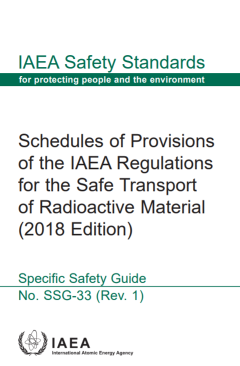
IAEA - Safety Standards Series No. GSR Part 5 : PREDISPOSAL MANAGEMENT OF RAD…
This Safety Requirements publication applies to the predisposal management of radioactive waste of all types and covers all the steps in its management from its generation up to its disposal, including its processing (pretreatment, treatment and conditioning), storage and transport. Such waste may arise from the commissioning, operation and decommissioning of nuclear facilities; the use of radi…
- Edisi
- -
- ISBN/ISSN
- 978–92–0–111508–9 / 1020–525X
- Deskripsi Fisik
- 56 p
- Judul Seri
- -
- No. Panggil
- -
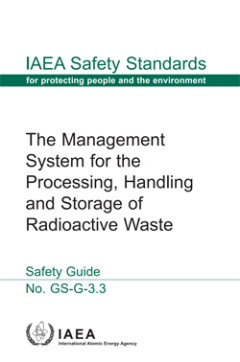
THE MANAGEMENT SYSTEM FOR THE PROCESSING, HANDLING AND STORAGE OF RADIOACTIVE…
The objective of this Safety Guide is to provide guidance on the development and implementation of management systems for the pretreatment, treatment, conditioning and storage of radioactive waste. This publication also includes a description of how to apply the requirements detailed in IAEA Safety Standards Series No. GS-R-3, to the activities associated with producing a packaged waste form fo…
- Edisi
- -
- ISBN/ISSN
- 9789201020086 / 1020525X
- Deskripsi Fisik
- 79 p. : Illus. ; 24 cm
- Judul Seri
- Safety Standards Series No. GS-G-3.3
- No. Panggil
- -
 Karya Umum
Karya Umum  Filsafat
Filsafat  Agama
Agama  Ilmu-ilmu Sosial
Ilmu-ilmu Sosial  Bahasa
Bahasa  Ilmu-ilmu Murni
Ilmu-ilmu Murni  Ilmu-ilmu Terapan
Ilmu-ilmu Terapan  Kesenian, Hiburan, dan Olahraga
Kesenian, Hiburan, dan Olahraga  Kesusastraan
Kesusastraan  Geografi dan Sejarah
Geografi dan Sejarah